
In a COVID-19 world, pace yourself to stay resilient and avoid burnout
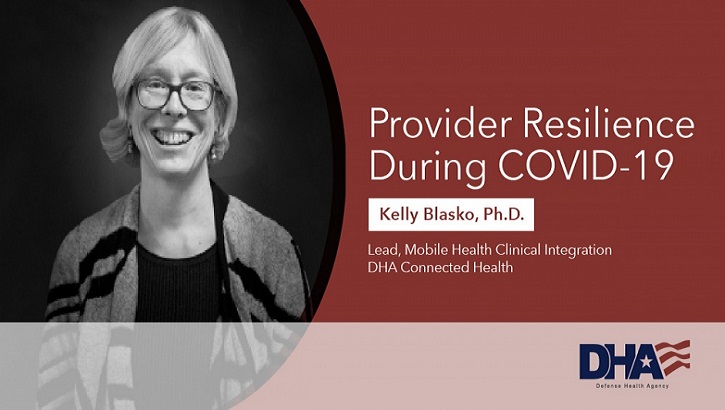
Kelly Blasko, Ph.D., is a clinical psychologist and the lead for mobile health clinical integration at the Defense Health Agency Connected Health branch. She shares what providers can do to pace themselves and use self-care practices and tools to stay resilient and avoid burnout. (DoD photo by Savannah Blackstock)
Remember before the COVID-19 coronavirus pandemic, when we medical providers all thought we were stressed out? Me neither. Since cases started erupting earlier this year, it feels like everyone is in crisis mode 24/7, and it is still unknown when these unprecedented conditions will ease up, let alone end.
The relentless pace, mounting tension, and general uncertainty are already taking their toll. All of us are searching for information to continue to give the best care possible to our beneficiaries. Clinicians, medics, nurses, technologists, and technicians inside the Military Health System and out are facing burnout, including compassion fatigue and secondary traumatic stress. If we don’t take care of ourselves the pool of providers will decrease while the demand for care increases.
Our response to COVID-19 is a marathon, not a sprint. Right now, one of the best things we providers can do is to pace ourselves and use self-care practices and tools. That is the only way we can stay resilient enough to win in the long run. If we don’t take care of ourselves when we need it, we can’t give patients the best possible care when they need it.
You can start pacing your work activity and including self-care with these three easy steps:
- Recognize the signs of burnout: Four of the most common are anxiety, low mood, irritability, disengagement, and exhaustion.
- Take self-care breaks when you see the signs. Distract yourself briefly (10 minutes is fine) with activities that increase your happiness and peace of mind. Wearable technology is useful in scheduling reminders to assess how you’re feeling.
- Cultivate a positive work environment. We’re all in this together and it’s important we lift each other up. Positive words for teamwork, kudos, praise, recognition can’t be overused in this current state.
Self-care means something different for everyone, and we want to help you in any way we can during the COVID-19 pandemic. Our Provider Resilience Toolkit contains free, evidence-based digital health tools developed by psychologists specifically designed to promote self-care, including the following Defense Health Agency apps:
- Provider Resilience App offers self-assessments and stress reduction tools along with a dashboard to track your daily resilience rating. This app is foundational to ensure provider resilience (Available in the App Store)
- Virtual Hope Box contains personalized tools to help you with positive coping, through relaxation, distraction, and connecting to others in a time of need. (Available in the App Store and Google Play)
- Breathe2Relax teaches diaphragmatic breathing to de-escalate stress (Available in the App Store and Google Play)
- The Military Meditation Coach Podcast teaches relaxation exercises and tips that help providers keep their mental health on track (https://www.health.mil/podcasts)
Driven by our mission to serve our patients, we are used to giving our all, every day. It is hard to pull back – even temporarily – when circumstances demand so much of us, but we must. The only way we will get through this is to take care of ourselves and each other.
Kelly Blasko, Ph.D., is a clinical psychologist and the lead for mobile health clinical integration at the Defense Health Agency Connected Health branch.
Disclaimer: Re-published content may be edited for length and clarity. Read original post.
Need for blood donations constant despite COVID-19
Article
3/26/2020
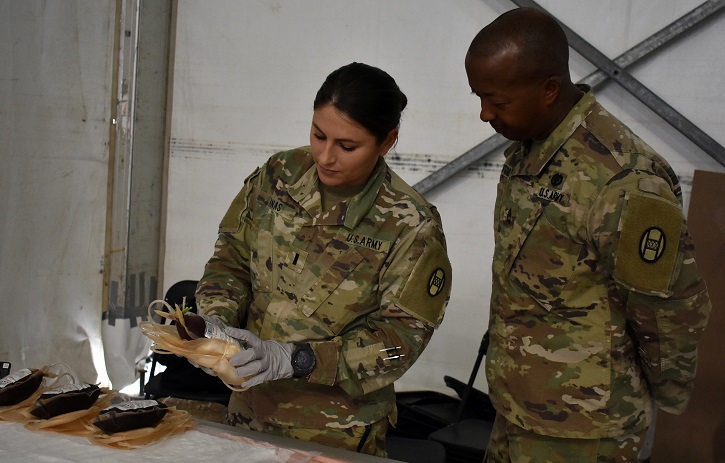
Limited shelf life, canceled blood drives threaten supply
Nearly 10,000 Guardsmen called up for COVID-19 response
Article
3/25/2020
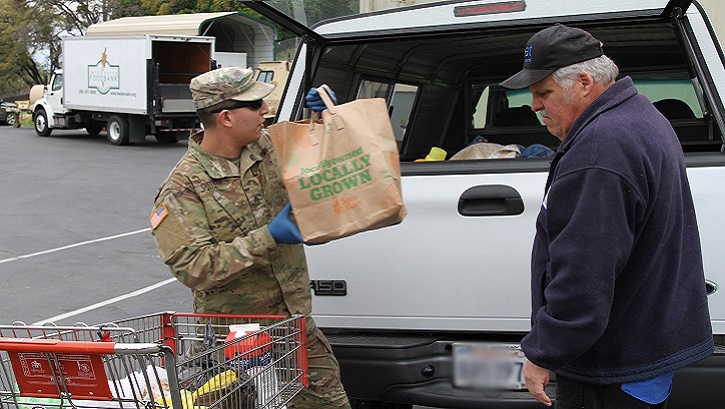
The president left control of the National Guard to the governors and the adjutant generals
DoD aims to fill medical gaps with military while states, cities ramp up
Article
3/24/2020

The secretary sees the military filling gaps in cities, states until they can deal with COVID-19 on their own
USNS Mercy departs San Diego
Article
3/24/2020
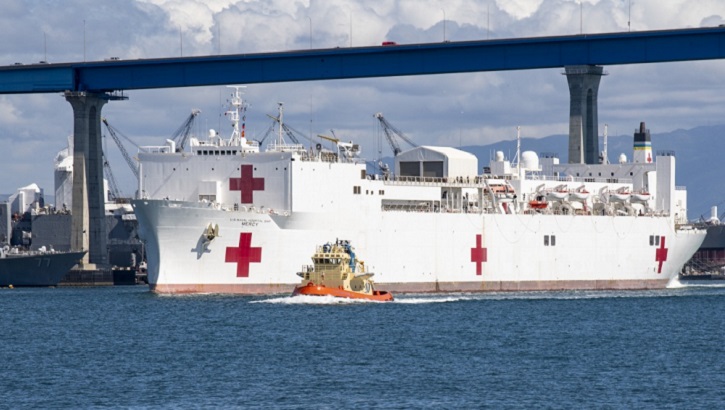
Mercy's mission is to provide full hospital services to support U.S. disaster relief and humanitarian operations worldwide.
A full night’s sleep could be the best defense against COVID-19
Article
3/23/2020

Getting more sleep could dramatically improve your odds of avoiding infection
Air Force takes steps to assure ‘unblinking’ operations, readiness and capabilities amid pandemic
Article
3/23/2020

Within the Air Force, our medics are executing all available measures to mitigate the spread of COVID-19
Addressing emotional responses to threat of Coronavirus
Article
3/20/2020

Even if you’re feeling healthy, medical professionals recommend staying home and limiting social contact as much as possible
Place addresses DHA COVID-19 response
Article
3/19/2020

Crisis Action Team part of broad-based effort
DoD ready to help with Coronavirus, but capability limited
Article
3/17/2020

The DoD has only about 2% to 3% of the number of hospital beds that the private sector has
DoD issues flexible instructions on response to Coronavirus
Article
3/13/2020
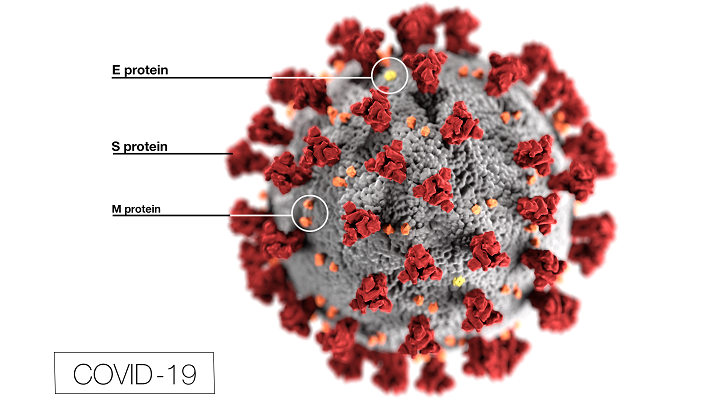
The memo covers aspects from before the outbreak through all levels of infection
How DHA monitors the spread of health outbreaks
Article
3/13/2020
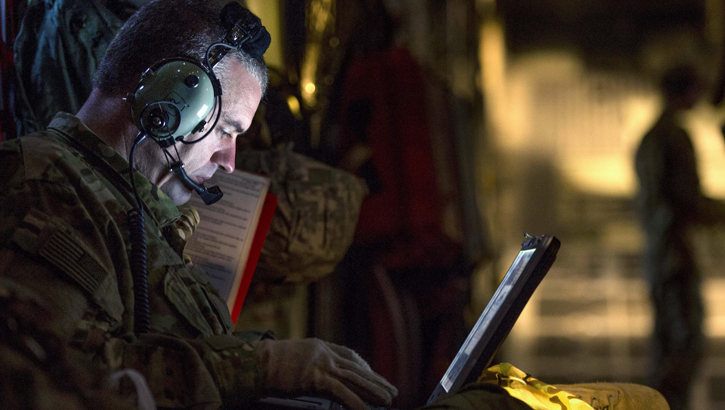
The Defense Health Agency works as a combat support agency to the military services and Military Health System
COVID-19: Know what the terms mean
Article
3/10/2020

Learning the language can help you stay safe
Coronavirus: What you need to know
Article
3/6/2020

Although news stories and images contain many reports of people wearing surgical masks to ward off the virus, that's not recommended
DoD makes plans to combat Coronavirus
Article
3/4/2020
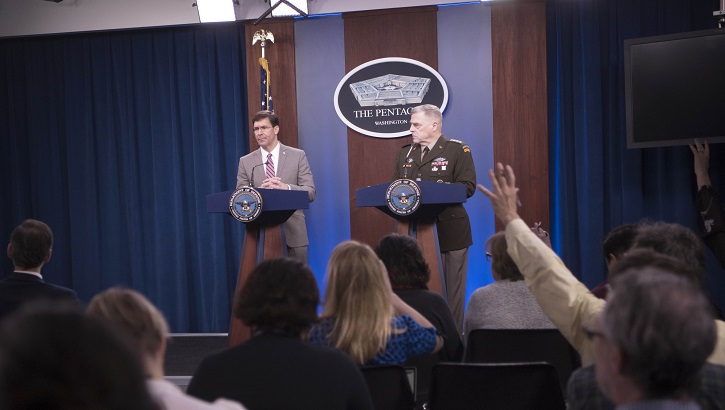
The number one priority remains to protect our forces and their families
MHS prepared to support interagency coronavirus response
Article
2/6/2020
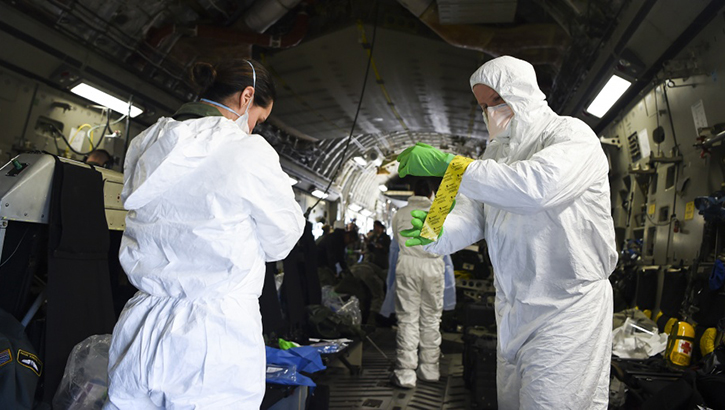
From R&D to force health protection, MHS protects DoD personnel and families






















.png)











No hay comentarios:
Publicar un comentario